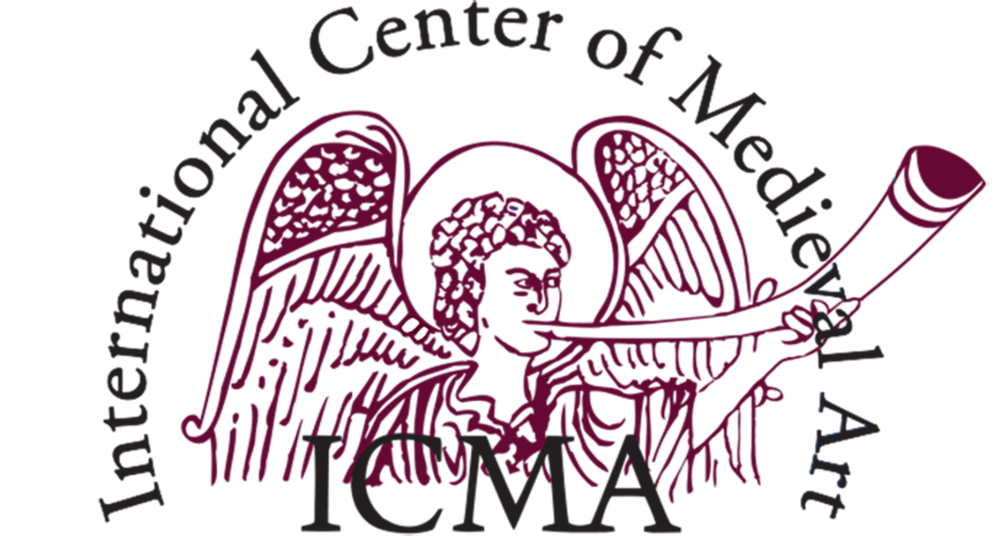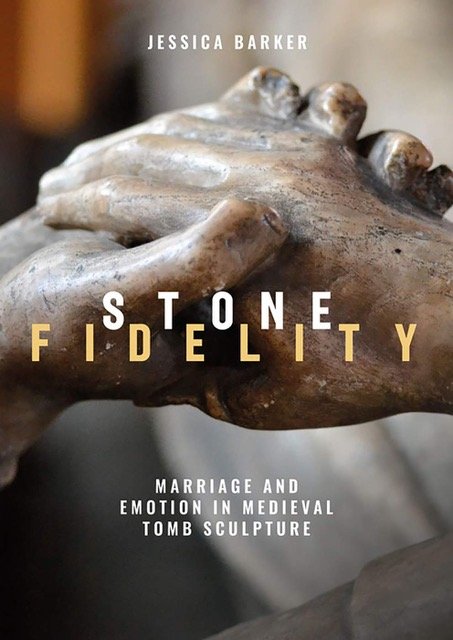ICMA Sessions at the International Congress on Medieval Studies
The 57th International Congress on Medieval Studies takes place online Monday, May 9, through Saturday, May 14, 2022, followed by two weeks of recorded content available to registrants from Monday, May 16, through Saturday, May 28. Special events include a series of behind-the-scenes museum visits.
More information: https://wmich.edu/medievalcongress
Monday, May 9, 9:00 a.m. EDT
From Prophet of Israel to Miracle-Working Saint: The Transformations of Elijah’s Story in Jewish and Christian Iconographic Traditions (ca. Third–Fifteenth Centuries)
Sponsor: International Center of Medieval Art (ICMA)
Organizer: Barbara Crostini, Uppsala Univ.
Presider: Barbara Crostini
Witness and Redeemer: Elijah the Prophet as Envisioned by Jews in Medieval Europe
Chana Shacham-Rosby, Center for Jewish Studies, Harvard Univ.
Narrative Strategies and Sacramental Meanings: Picturing Elijah’s Story in the Thirteenth-Century Frescoes at Morača Monastery
Andrei Dumitrescu, Central European Univ./New Europe College
Witnessing Elijah and Elisha: The Sons of the Prophets as Monastic Exemplars
Erika Loic, Florida State Univ.
The Prophet Elijah and the Theme of Spiritual Filiation in Moldavian Iconography, ca. 1480–1530
Vlad Bedros, New Europe College
Monday, May 9, 1:00 p.m. EDT
Mining the Collection I: Aga Khan Museum (A Virtual Visit)
Sponsors: International Center of Medieval Art (ICMA), Medieval Institute, Western Michigan Univ.
Organizer: Michael Chagnon, Aga Khan Museum
Presider: Michael Chagnon
Oliphant
Mariam Rosser-Owen, Victoria & Albert Museum
Raqqa Albarello
Marcus Milwright, Univ. of Victoria
Base of a Mosul Incense Burner
Ruba Kana’an, Univ. of Toronto–Mississauga
Tuesday, May 10, 1:00 p.m. EDT
Mining the Collection II: J. Paul Getty Museum (A Virtual Visit)
Sponsors: International Center of Medieval Art (ICMA), Medieval Institute, Western Michigan Univ.
Organizer: Elizabeth Morrison, J. Paul Getty Museum
Shirin Fozi, Univ. of Pittsburgh
Presider: Elizabeth Morrison
Wenceslaus Psalter
Meredith Cohen, Univ. of California–Los Angeles
Ovid, Excerpts from Heroides
Cynthia Brown, Univ. of California–Santa Barbara
Bifolium from the Pink Qur’an
Linda Komaroff, Los Angeles County Museum of Art
Wednesday, May 11, 1:00 p.m. EDT
Mining the Collection III: The Metropolitan Museum of Art (A Virtual Visit)
Sponsors: International Center of Medieval Art (ICMA); Medieval Institute, Western Michigan Univ.
Organizer: C. Griffith Mann, Metropolitan Museum of Art
Shirin Fozi, Univ. of Pittsburgh
Presider: C. Griffith Mann
Magdeburg Ivory
Jacqueline Lombard, Metropolitan Museum of Art
Ivory Mirror Backs
Scott Miller, Metropolitan Museum of Art
Ivory Panels with Peter and Paul and Ivory Mortar
Nicole Pulchene, Metropolitan Museum of Art
Thursday, May 12, 9:00 a.m. EDT
Naples and Beyond: World-Wide Cultural Networks I: Within Naples
Sponsor: International Center of Medieval Art (ICMA)
Organizer: Denva Gallant, Univ. of Delaware
Presider: Janis Elliott, Texas Tech Univ.
Confraternal Art and Architecture in Angevin Naples: The Hospital of Saint Eligio and the Compagnia della Croce at Saint Agostino
Stefano D’Ovidio, Univ. degli Studi di Napoli Federico II
Ribbed Domes in Naples and South Italy
Caroline A. Bruzelius, Duke Univ.
Naples outside Naples: Medieval Funerary Sculpture at the Abbey of Montevergine
Paola Vitolo, Univ. degli Studi di Napoli Federico II
De statua: Visualizing Fame in Early Renaissance Naples
Nicolas Bock, Univ. de Lausanne
Thursday, May 12, 1:00 p.m. EDT
Mining the Collection IV: Dumbarton Oaks Museum (A Virtual Visit)
Sponsors: International Center of Medieval Art (ICMA); Medieval Institute, Western Michigan Univ.
Organizer: Jonathan Shea, Dumbarton Oaks Research Library and Collection
Shirin Fozi, Univ. of Pittsburgh
Presider: Jonathan Shea
Seal of Constantine, Imperial Protospatharios
Nikos Kontogiannis, Dumbarton Oaks Research Library and Collection
Seal of John, Metropolitan of Mytilene
Eric McGeer, Dumbarton Oaks Research Library and Collection
Seal of John, Candlemaker
Alex Magnolia, Univ. of Minnesota–Twin Cities
Thursday, May 12, 3:00 p.m. EDT
Naples and Beyond: World-Wide Cultural Networks II: Beyond Naples I
Sponsor: International Center of Medieval Art (ICMA)
Organizer: Janis Elliott, Texas Tech Univ.
Presider:Denva Gallant, Univ. of Delaware
Xmaltatis per totum: The “Church Reliquary” at San Nicola, Bari, in Context Jill Caskey, Univ. of Toronto–Mississauga
Kings in Heaven and Workers in Hell: A Civic Last Judgment Fresco in Sant’Agata de’ Goti
Claire Jensen, Univ. of Toronto
Court Art beyond Naples: The Frescoes of Santa Caterina, Galatina
Maria Harvey, James Madison Univ.
Thursday, May 12, 5:00 p.m. EDT
Naples and Beyond: World-Wide Cultural Networks III: Beyond Naples II
Sponsor: International Center of Medieval Art (ICMA)
Organizer: Janis Elliott, Texas Tech Univ.
Denva Gallant, Univ. of Delaware
Gilbert Jones, International Center of Medieval Art
Presider: Cathleen A. Fleck, St. Louis Univ.
A Manuscript on the Move: The Kitāb al-Hāwī between Tunisia and Naples Nora S. Lambert, Univ. of Chicago
The Dynastic in the Monastic: Considering the Image of Robert of Anjou in Morgan MS M.626
Denva Gallant
The Hungarian Angevin Legendary: A Picture-Book of Saints Lives and Its Con- nection to Angevin Naples
Janis Elliott
Thursday, May 12, 7:00 p.m. EDT
New Approaches to the Art and Architecture of Angevin and Aragonese Naples (1265–1458)
Sponsor: International Center of Medieval Art (ICMA) Student Committee
Organizer: Gilbert Jones, International Center of Medieval Art
Presider: Emma Langham Dove, Univ. of Virginia
Gilbert Jones
A Christological Cycle Fit for a Queen in the Bible of Naples (BnF, MS fr. 9561)
Eilis Livia Coughlin, Rice Univ.
Joanna I of Naples: A Queen’s Visual Heritage
Paula van der Zande
Francisco Laurens, Ymagier du roi: Sculpting the King of Sicily in Provence during the Second Half of the Fifteenth Century
Françoise Keating, Univ. of Victoria
The Battle for Otranto: Adriatic Cultural Competition in the Wake of Ottoman Aggression
Jacob Eisensmith, Univ. of Pittsburgh Respondent: Denva Gallant, Univ. of Delaware
Janis Elliott, Texas Tech Univ.
Friday, May 13, 1:00 p.m. EDT
Mining the Collection V: Cleveland Museum of Art (A Virtual Visit)
Sponsors: International Center of Medieval Art (ICMA); Medieval Institute, Western Michigan Univ.
Organizer: Gerhard Lutz, Cleveland Museum of Art
Shirin Fozi, Univ. of Pittsburgh
Presider: Gerhard Lutz
Aṣṭasāhasrikā Prajñāpāramitā-sūtra Manuscript Reed O’Mara, Case Western Reserve Univ.
Fragment of an Icon of the Crucifixion
Elizabeth S. Bolman, Case Western Reserve Univ.
Death of the Virgin
Elina Gertsman, Case Western Reserve Univ.
More information: https://wmich.edu/medievalcongress
















